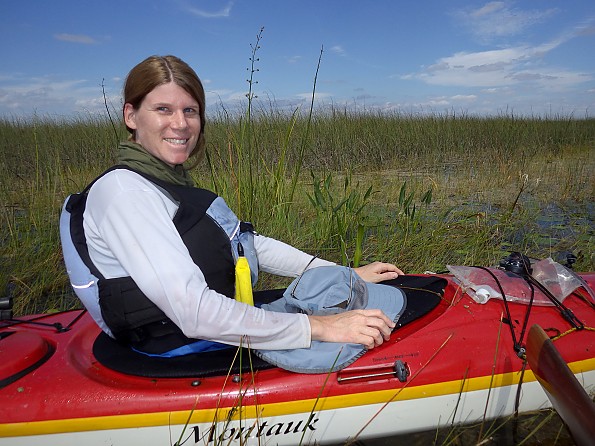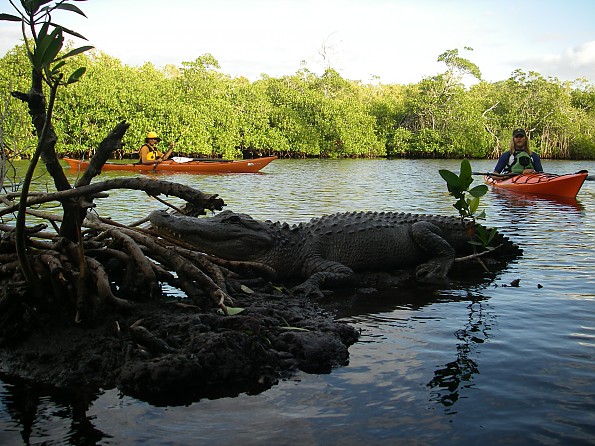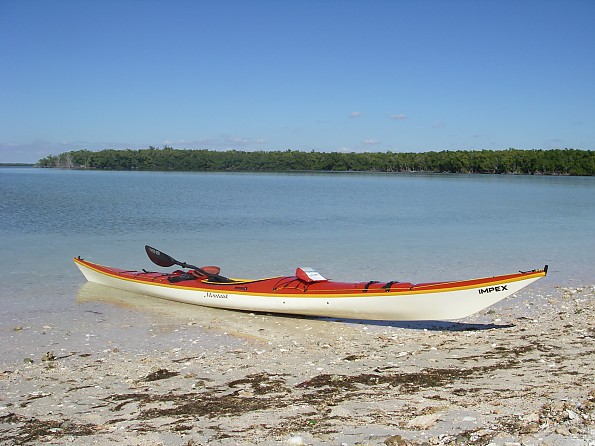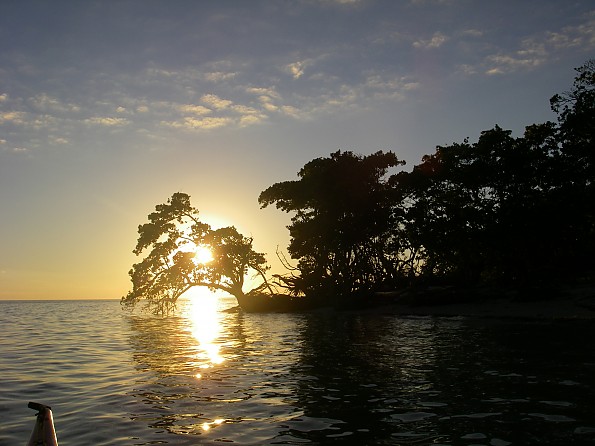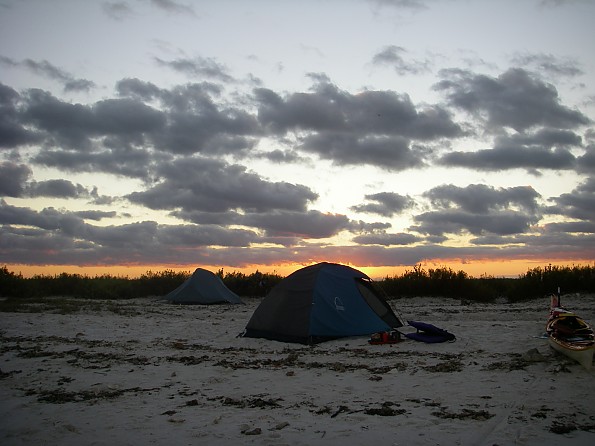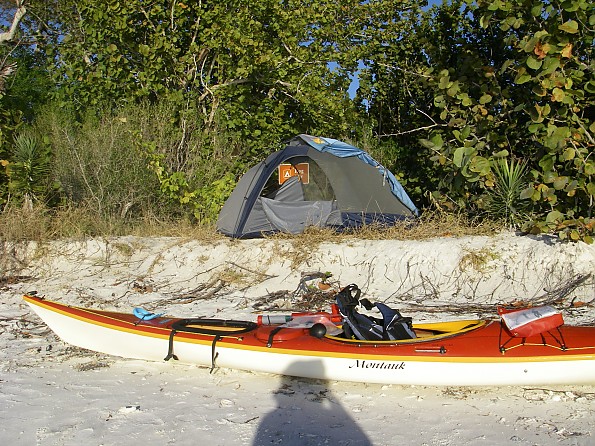Impex Kayak Montauk
The Montauk has been discontinued. If you're looking for something new, check out the best touring kayaks for 2025.
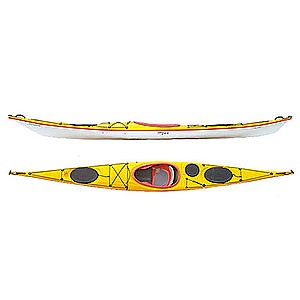
A true sports car in the world of kayaks, the low-volume Impex Montauk is a classic amongst Greenland or British style boats. Even in the limited and more refined world of skeg boats, she scores amongst the top for her responsiveness, stability, and comfort.
Pros
- Dynamic performance
- Low-volume
- Gorgeous lines
Cons
- Company may be out of business

Background: After 8 years of paddling and owning multiple kayaks of various styles and sizes, I was fortunate to come across an ad for an Impex Montauk on Craigslist. My very first touring kayak was a Seda Swift, and while a great boat in its own right, it taught me that as a smaller-framed female, I needed a better fit.
My favorite adage about kayaking is that you ‘wear a kayak’ and not just simply sit inside one. For the distances I was beginning to put in, efficiency and a good fit began to really matter. Just like it is inefficient and uncomfortable to use a backpack that is too large in capacity, heavy, or torso length, the same is true for kayaks.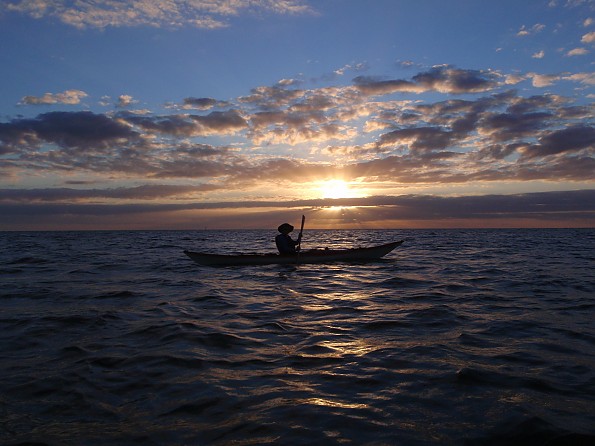
I had done my homework on the Montauk and the price was right, so she became my first skeg boat. I'll also note that she was already 10 years old when I bought her secondhand, but she was new to me and barely had a scratch on her due to the previous owner's lack of use. I think he mentioned that she was too ‘tippy’ for him, which has not been my experience, as I’ll later explain.
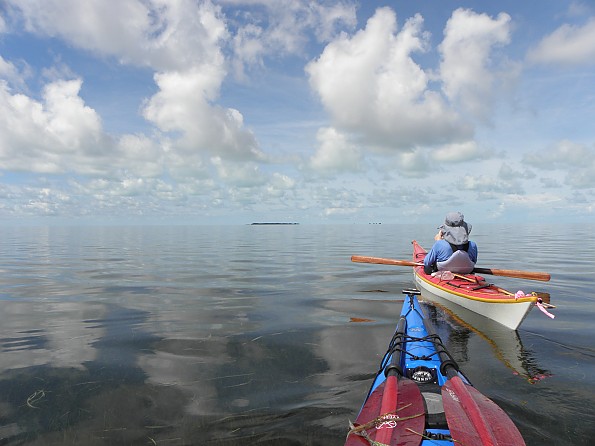
A low-volume sports car: So, 5 years down the road, this now 15 year-old kayak still makes me feel like I'm paddling a Ferrari in the world of kayaks. She's not the fastest, lightest, or most feature-rich boat out there (at least not my older version) but I adore her liveliness. At 16' total length (15’ waterline) and a 22" beam, she is the perfect size for me.
My fiberglass model weighs just under 50 lbs and has a suggested paddler weight of 120 to 190 lbs. These low-volume dimensions are similar to some more popular designs like the NDK Romany and Valley Avocet. But my favorite aspect is her rocker and soft keel, great for so many applications...edging in tight mangrove channels, surfing, and breaking through chop. I always marvel at how springy she feels and how quick her responses are, especially after having paddled larger, flatter boats that are good for going in a straight line but not much else.
The low fore-deck also facilitates various angles of paddling without hitting your hands on the coaming…something that drives me crazy about larger-volume boats. I find using a Greenland stick works great, much better than euro blades but this is a personal preference. Some might classify this as a Greenland-style boat but it is probably more appropriately lumped into the category of British boats like Valley and P&H. Notably, Impex was a Canadian manufacturer but appears to have recently gone out of business.
Stability: The Montauk is actually a pretty stable boat, despite her narrower beam. I can even stand up in the cockpit on a calm day. I routinely go on snorkeling trips to the reef in this boat...there's just enough room in the key-hole cockpit for me to don my gear, roll out, and then climb back in. She tolerates all my maneuvering around like a champ while at anchor.
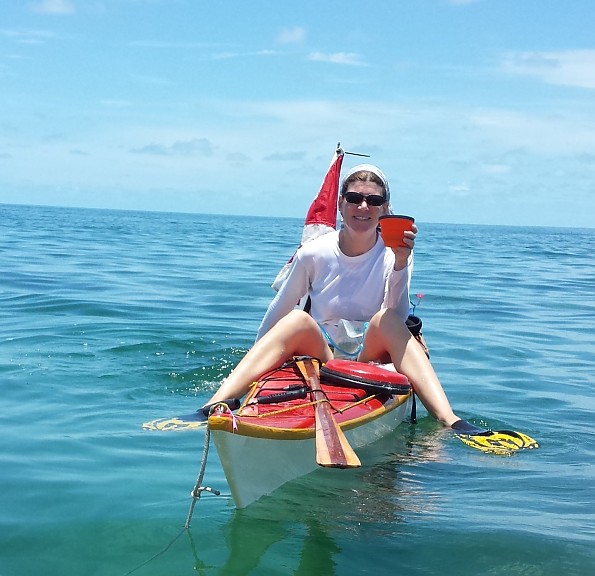

Alternatively, she is also pretty easy to roll, being the first boat I ever successfully practiced the maneuver in (and I got it on my first try!). I've only ever rolled her unintentionally when I was trying to surf some shore breaks…comes with the territory. Fortunately, I find her just as easy to wet-exit and to climb back in.
Pack-ability/versatility: I've done a lot of camping trips out of this boat, the longest being the 100-mile wilderness waterway through the Everglades. I carried water and food for 5 days, along with all my gear. It was a squeeze, but quite feasible with lightweight gear that is generally more suited for backpacking.
The first day out on that trip did see me burying the bow in wind chop due to too much water stored forward, so you do have to be conscience of the balance in a low-volume boat like this.
Loading for the Wilderness Waterway trip in Everglades National Park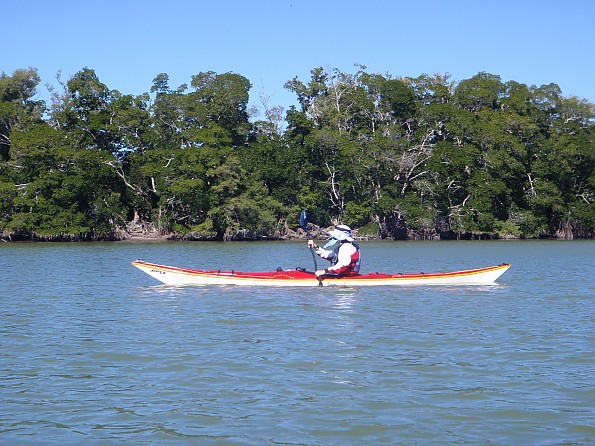
With about 70 additional pounds at the beginning of the trip, this shot depicts my much lower freeboard.
She has a pretty standard setup with forward and rear hatch compartments, along with a day hatch that I use most of all during day trips. The skeg box does take up some of the room in the rear, but is a good compromise considering the many advantages of a skeg over a rudder. Clean lines and fine-tuning to any desired heading…though I don’t often even need the skeg given her lower freeboard.
(A collection of my many Everglades adventures)
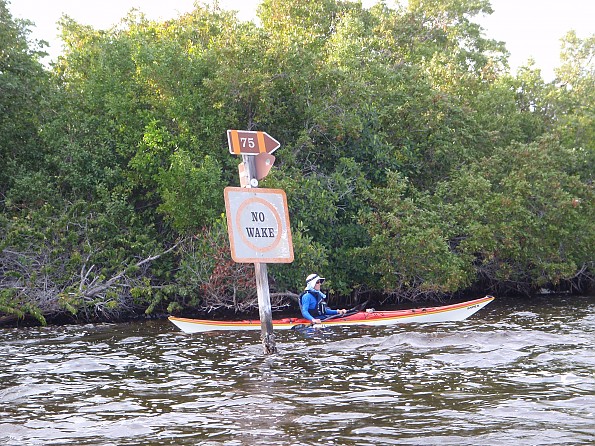

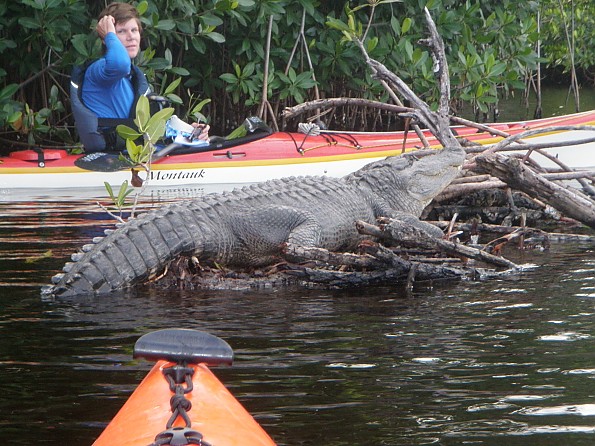
Comfort: The Montauk is the most comfortable boat I’ve ever paddled. In addition to numerous 8 hour days, I set my PR at 26 miles in one day in this boat, with no discomfort whatsoever to my lower extremities. Rather surprisingly, I can sit in the molded fiberglass seat all day without my butt hurting but my other kayak, with a padded seat, gives me bruises. I can’t figure it out but it seems to ring true that sometimes simpler is better.
The thigh pads are also very sparse (just thin strips of a neoprene-like material), but even these I find preferable over the more padded ones. They make it easy to slide my legs in and out of position against the bulkhead, so that I never feel like I’m putting too much pressure on my knees while still being able to maintain good, even contact with the hull.
A quality Immersion Research backband completes the cockpit…no other padding or bells-and-whistles needed. 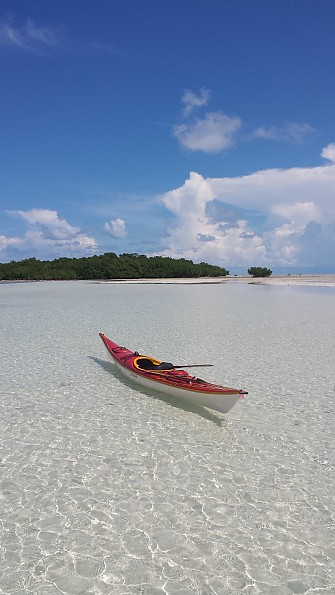
Durability: As for maintenance (and given her age), I've had to replace the skeg cable, hatch seals, bungee and deck lines. I mailed the skeg and hatch covers up to the Impex rep up in North Carolina, who did the custom repairs very quickly and reasonably priced. Customer service A+, though I don’t know if that support still exists given the dissolved state of the company.
Fortunately for DIY’ers, the skeg design is simple and the cable easily removed for maintenance, unlike some other designs I've come across. I also actually prefer the fiberglass hatch covers, as they are easy to remove and allow for larger openings by which to load gear. I usually get very little to no water inside the compartments, so the seals on the covers themselves do a decent job. Newer models come with the more modern rubber hatch seals.
She has more scratches and dings than when I bought her, but considering all that I have put her through, she has aged quite well. My only criticism is a weak spot on the bow, just at the waterline. I cracked the glass while trying to rescue a capsized 2 person SOT…70 lbs of rotomold coming alongside rather abruptly proved too much. I have patched the spot with some glass and epoxy...good as new.
I have no plans to upgrade to another kayak at this point because after 15 years of paddling, I finally feel like I’ve found my perfect boat.
Source: bought it used
Your Review
You May Like
Specs
| Length Overall |
16 ft |
| Beam |
22 in |
| Depth Amidships |
12.5 in |
| Dry Weight |
49 lbs (composite layup) |
| Cockpit |
16 x 30 in |
| Suggested Paddler Weight Range |
120-190 lb |


